My fascination with Labrador started sometime in the late 1990s. Having grown up in the mountains of Colorado, where seemingly every little creek and beaver pond was stacked with non-native brook trout that topped out at about eight inches long, I yearned to feel the tug of a real brookie — a five-pound behemoth that swam where it was supposed to swim. That place, of course, was Labrador. The far-flung Canadian province might have been on the same continent, but for a young angler with limited means and designs on a somewhat normal existence, Labrador might as well have been on the moon.
At the time, I was a journalist. That meant I had no money (that “vow of poverty” thing might be real for the legit clergy, but it’s also an unspoken reality for young, ink-stained wretches) and, while gainfully employed, there was no way in hell I could take a week off to do something as frivolous as fly fishing for brook trout in Labrador. Especially not when statements like, “Dude, we’re late with the rent,” were uttered monthly in our little household.
So, on the backburner Labrador went. I continued to write and edit newspapers. Back in the day, in order to move up, you had to move on, and I found myself changing jobs about every two years, just to collect what amounted to cost-of-living pay increases. Eventually, I found myself in northern California, and, finally, I landed in eastern Idaho, which, as best as I could tell, was just like Colorado, but without all the Coloradans.
But Labrador still beckoned, largely because, even here in Idaho, the stunning non-native brook trout that dominated many of the region’s small waters still managed to stunt at about eight inches long. The yearning to catch a legitimate brookie still burned in my belly.
Some day, I thought. Some day …
A hot day in Goose Bay
More Like This
In July 2023, I finally made it Labrador. No longer a young angler, but still eager to latch into a truly mammoth brook trout, I was thrilled at the prospect. I was to fly into a small fish camp on a lake well into the Labrador interior, where, presumably, giant brookies were waiting in the lake’s tributaries to hit everything I threw at them.
I arrived in the province on a sultry evening, particularly considering the latitude and was eager to get out and see the landscape. The next day was bright and sunny in the little jump-off town of Goose Bay, known to the locals simply as “Goose Bump.” It was predictably beautiful, with its boreal landscape and leafed-out aspens and birch trees.
But it was hot. Like … not Canada hot. Like Tennessee hot. And it had been that way for a while. The manager at the lodge was quick to point out that it had been unseasonably hot — perhaps hotter than ever before. And, we were told, fishing hadn’t been great because of it.
In truth, the weather had cooled a bit, getting down below 60 degrees (about 15 degrees Celsius) at night. Cooler nights would give the fish a chance to move off the springholes where they no doubt rested in search of thermal relief and start feeding again. If the daytime temperatures stayed below 70 (21 degrees Celsius), we were told, we could be in for a really good trip, especially if we also got some cloud cover.
The next day, as four of us boarded a little DeHavilland Beaver at the Goose Bay marine airport, it was evident that we’d be flying into a brook trout lodge, but that the brook trout might not be there to meet us. Bright and sunny, it was downright pleasant at the crack of dawn. By the time we were airborne, it was warm and sticky
The flight was short — maybe 30 minutes. And, as we circled the fish camp below us, one of the anglers, a great guy named Adam from Halifax, piped in and pointed out the window.
“What’s the green stuff on the water?” he asked, having to kind of shout over the rotary report of the Beaver’s engine. I looked out the window, and, sure enough, a thin layer of nuclear green detritus floated menacingly on the dark water of the lake, just off the dock from the camp.
“Algae,” the pilot said, shaking his head.
It was kind of deflating, honestly. If the water was warm enough to sprout algae, it was most certainly too warm for brook trout. I looked at Adam, who looked at his buddy, Kevin. The three of us just shook our heads.
We spent that first day hunting for bookies and cool water — finding neither. I’d finally made it to Labrador to find giant brookies and, thanks to the water conditions and the weather, the fish were nowhere to be found.
A Pike Trip
The following morning brought more of the same. While the water had cooled off a bit, it wasn't enough to bring the brookies out of hiding. So, that afternoon, after gobbling down a turkey sandwich for lunch at the camp, Kevin, Adam and I geared up for pike. Why fight it? By noon, the water temperature was nearly 70 degrees. While no self-respecting brookie would leave a coldwater spring seep to look for food under those conditions, all three of us knew that pike had to eat.
And eat they did. The fishing, once we shifted gears and started casting gurglers and streamers to pike, was pretty good. We didn’t catch anything huge — maybe a couple in the 35-inch range — but at least we were connecting.
Still, that evening, as the sun finally dipped below the horizon just after 11 p.m., reality set in.
“I wonder if it’ll get cold enough tonight to bring the brook trout out tomorrow,” Kevin said, staring out into the twilight. Adam and I looked at one another and shook our heads slowly. We tipped our glasses toward each other, but all three of us knew what we were up against.
While warm weather isn’t a total stranger to the north, it’s definitely becoming a more frequent and annoying visitor — kind of like the drunk uncle who shows up for Thanksgiving dinner and ruins a perfectly good evening by spewing ribald, yet perfectly accurate truths about his relatives.
I took a sip of Irish whiskey from my tumbler, and looked at my two fishing companions from Nova Scotia.
“Let’s face it,” I said. “You’re on a pike trip.”
Adam’s eyes got big and his face got a little red.
“I’m not on a fu**ing pike trip,” he said. Then he finished guzzling his beer, squashed the can and grabbed another.
The inconvenient truth
A day later things had cooled off a bit. The temperature in the lake was still a balmy 68 degrees at sunrise, but it hadn’t chilled enough to bring the brookies out. We went out just after breakfast, and fished until we broke a sweat. Pike mostly. Kevin and Adam tried to troll for deepwater brookies, while I worked inlets and outlets, trying like hell to find cooler water as I navigated the streambanks.
Still no brook trout.
At noon, we huddled around the lunch table at the fish camp, pretty well defeated. By this time, even the pike were in kind of a melancholy mood.
“We want to get out of here,” Kevin said. “But there’s no plane scheduled until we leave.”
I nodded. I, too, would be fine leaving the lake early and leaving the brook trout be. I told the guys that even if we did catch one, the fight would more than likely kill it. And I couldn’t have that on my conscience.
So, after lunch, rather than gear up, we started drinking. It was mostly out of self defense, honestly. After a few drinks, we took a nap. Then, dinner. More drinks.
By the fourth day, even the drinking was sketchy. I was rationing my rum like a privateer commodore and the beer was running low. Finally, on the fifth day, the lodge manager agreed to let us leave a day early, and head back to Goose Bay.
Predictably, the next morning dawned clear and, frankly, downright chilly. The water temperature was 66 — overnight, the thermometer dipped into the 40s. And there was a Beaver on its way to get us.
But, frankly, that was fine with us. We’d developed this odd camaraderie … this weird brotherhood that only crappy fishing and defensive drinking can create. If the brook trout showed up that morning, I don’t think we’d have even unpacked a fly rod. Misery. It loves company. And the more miserable it gets, the better the story is six months later.
As the bright orange Beaver tickled the tops of the black spruce forest and slid into the lake, we were at the dock, packed and ready. If we had white flags, we’d have waved them.
A couple weeks ago, I let Kevin and Adam know about a group trip I’m hosting to the Yukon in June.
“We’re going after pike,” I said. Which is largely true. There will be big lake trout there, too. And grayling and rainbows. But the gang I’m going with is pike-crazy. And pike are worth a trip to the Yukon. But Adam’s reply email was predictable.
“Great to hear from you,” it read. “I’m not going on another fu**king pike trip with you.”





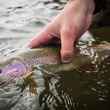
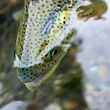




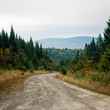




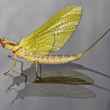
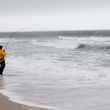



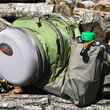
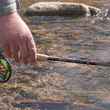



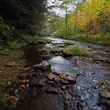
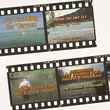

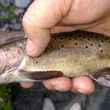
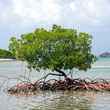
Comments
Larry Neasloney replied on Permalink
Bummer to hear to missed the brookies on your trip. We were at an adjacent lodge last summer and while we missed the prime dry fly season we still managed several life time brookies - on gurglers! - and some decent pike too. The guide in your photo looks like Thomas from our trip.
Jeff replied on Permalink
We experienced the exact same thing @ Igloo Lake Lodge in the first week of August. We successfully caught a number of big brook trout on the lake, but fished better on the river later in the week on mice. We found the trout in the lake where we found incoming creeks and springs. I should have packed the musky flies, but something inside my head says a 4/0 may not be legal. I haven't figured out to tye the universal adapta-fly, but when you have lemons, right? I hope your rum carried you through to the end. I'd return to Labrador, but choose a different lodge. The guides didn't adapt to conditions and the hospitality was less than I expected. Perhaps, I needed bourbon and an attitude adjustment as well. Tightlines.
Pages